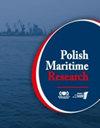Ultrasonic Detection of the Intravascular Free Gas Phase in Research on Diving
IF 2
3区 工程技术
Q2 ENGINEERING, MARINE
引用次数: 2
Abstract
Abstract The article presents a unique atypical application of the sonography technique and a methodological description of the introduction of this technique to research. The Bayesian approach applied to validation of the Doppler method for intravascular detection of the free gas phase instead of typical statistical inference has been demonstrated in the article. It describes the place of this method in the diving research work conducted in the Polish Naval Academy without any detailed analysis of the results achieved in the studies on decompression supported by ultrasonic detection of the free gas phase in venous vessels. It is a commonly held opinion that Doppler ultrasonic detection of the intravascular free gas phase is not a procedure that can be particularly useful in decompression research. The main objection is that detection of the free gas phase in venous vessels is a weak function to predict the presence of the free gas phase in tissues and arterial blood, so this method is not suitable for assessing the risk of decompression. Only a few countries disagree with this commonly held view and use this method to assess the risk of decompression in decompression studies. France has introduced detection of the free gas phase in venous vessels for diving research and then, together with Canada, improved this method, and developed it to a standard form. Based on the published results of the Canadian research, the technique was evaluated at the Naval Academy using statistical methods. The Academy accepted and adopted the results of this research and started to use this method in its own research on decompression over 25 years ago and continues to use it to great effect.潜水研究中血管内游离气相的超声检测
摘要本文介绍了超声技术独特的非典型应用,并对将该技术引入研究进行了方法描述。本文已经证明了贝叶斯方法应用于验证多普勒方法用于血管内检测游离气相,而不是典型的统计推断。它描述了这种方法在波兰海军学院进行的潜水研究工作中的地位,但没有对静脉血管中自由气相超声检测支持的减压研究结果进行任何详细分析。人们普遍认为,血管内游离气相的多普勒超声检测在减压研究中不是一种特别有用的方法。主要反对意见是,检测静脉血管中的游离气相对于预测组织和动脉血液中游离气相的存在是一项较弱的功能,因此这种方法不适合评估减压风险。只有少数国家不同意这种普遍持有的观点,并在减压研究中使用这种方法来评估减压的风险。法国已将静脉血管中游离气相的检测引入潜水研究,然后与加拿大一起改进了这一方法,并将其发展为标准形式。根据加拿大已发表的研究结果,海军学院使用统计方法对该技术进行了评估。25年前,科学院接受并采纳了这项研究的结果,并开始在自己的减压研究中使用这种方法,并继续使用它,取得了巨大的效果。
本文章由计算机程序翻译,如有差异,请以英文原文为准。
求助全文
约1分钟内获得全文
求助全文
来源期刊

Polish Maritime Research
工程技术-工程:海洋
CiteScore
3.70
自引率
45.00%
发文量
20
审稿时长
>12 weeks
期刊介绍:
The scope of the journal covers selected issues related to all phases of product lifecycle and corresponding technologies for offshore floating and fixed structures and their components.
All researchers are invited to submit their original papers for peer review and publications related to methods of the design; production and manufacturing; maintenance and operational processes of such technical items as:
all types of vessels and their equipment,
fixed and floating offshore units and their components,
autonomous underwater vehicle (AUV) and remotely operated vehicle (ROV).
We welcome submissions from these fields in the following technical topics:
ship hydrodynamics: buoyancy and stability; ship resistance and propulsion, etc.,
structural integrity of ship and offshore unit structures: materials; welding; fatigue and fracture, etc.,
marine equipment: ship and offshore unit power plants: overboarding equipment; etc.
 求助内容:
求助内容: 应助结果提醒方式:
应助结果提醒方式:


